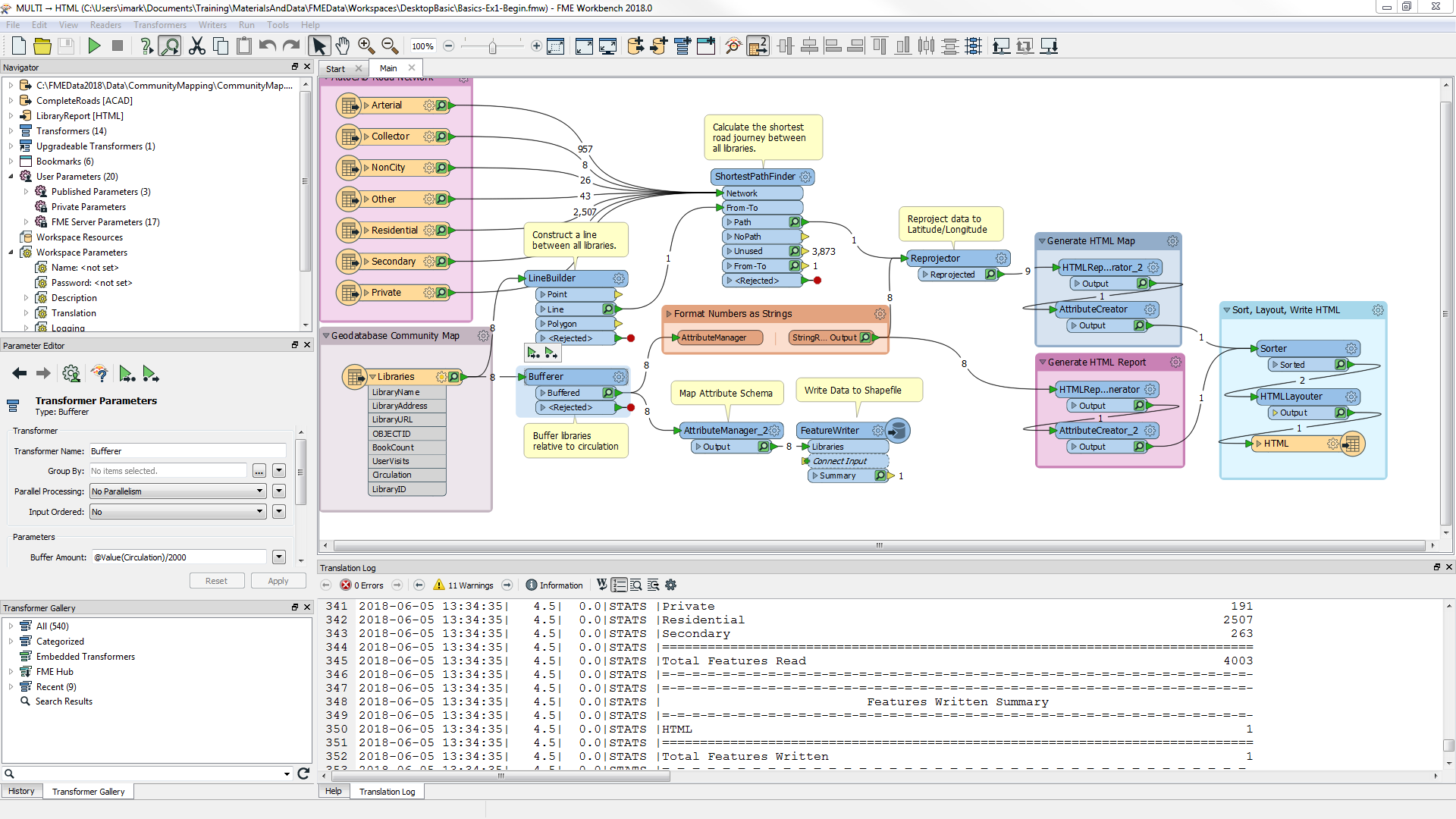FME Desktop
This course is about FME Desktop. FME Desktop is for data translations and transformations at the desktop level (as opposed to FME Server, which is an enterprise-level, web-based product).
FME Desktop consists of a number of different tools and applications. The two key applications are FME Workbench and the FME Data Inspector.
FME Workbench
FME Workbench is the primary tool for defining data translations and data transformations. It has an intuitive point-and-click graphic interface to enable translations to be graphically described as a flow of data.

Workbench is not a standalone tool. It is fully integrated to interact with other FME Desktop applications such as the FME Data Inspector.
FME Data Inspector
The FME Data Inspector is a tool for viewing data in any of the FME supported formats. It is used primarily for previewing data before translation or reviewing it after translation.

Map tiles by Stamen Design, under CC-BY-3.0. Data by OpenStreetMap, under CC-BY-SA.
FME Utilities
Besides Workbench and the Data Inspector, there are several other FME utilities.
- FME Help
- A tool for browsing through the various help documents for FME.
- FME Quick Translator
- A precursor to FME Workbench that is used only for quick translations requiring no data transformation.
- FME Integration Console
- A tool for embedding FME functionality into other GIS and CAD applications such as ArcGIS, AutoCAD, Geomedia, and MapInfo.
- FME Licensing Assistant
- An application for managing FME licensing.
Other FME Desktop Components
Additional components are also included as part of FME Desktop (Professional Edition or higher).
- FME Command Line Engine
- The FME Command Line Engine enables translations to be initiated at the command line level.
- FME Plug-In SDK
- The FME Plug-In SDK allows developers to add formats and functionality to the FME core.